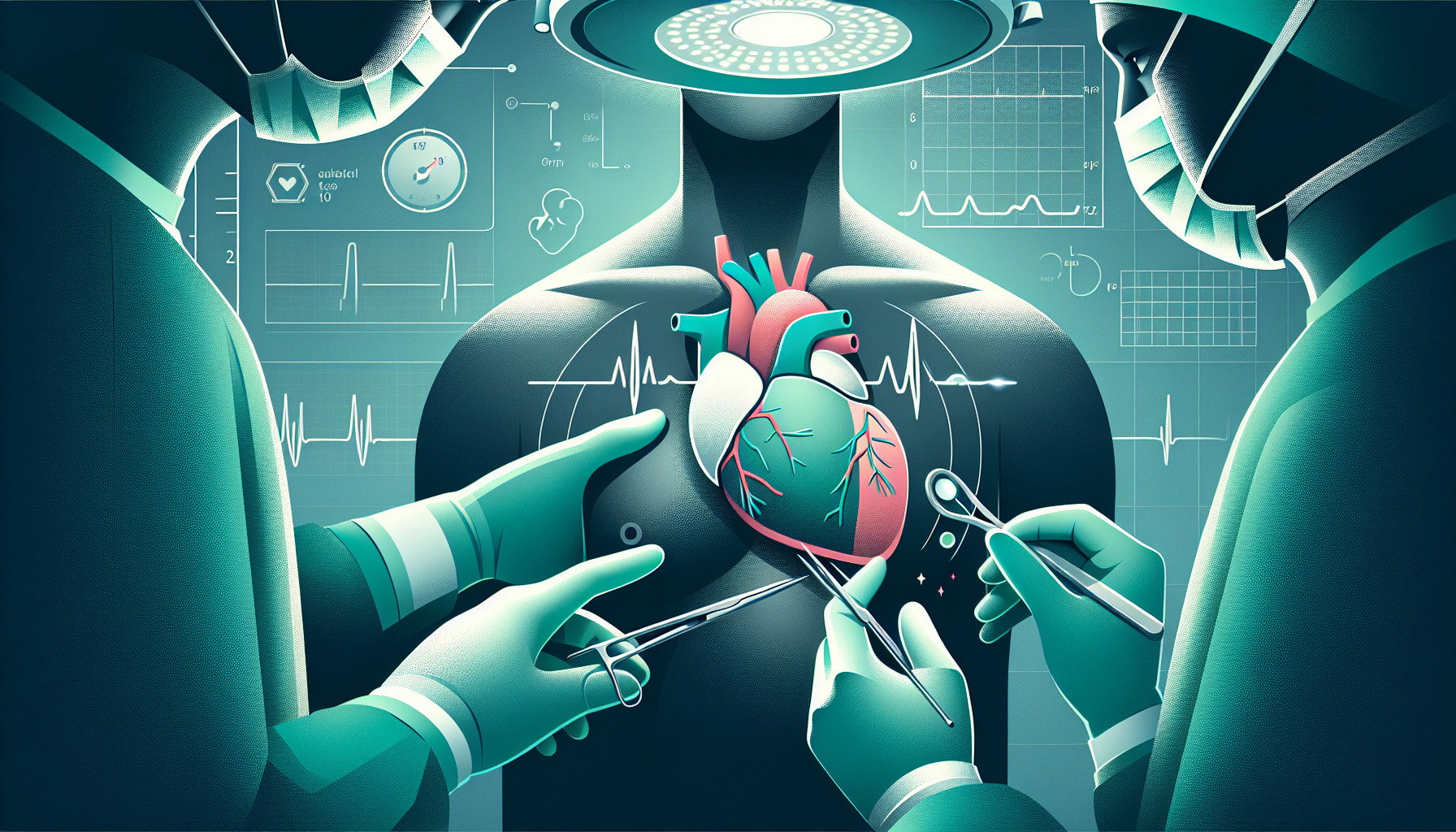Our Summary
This research paper is about a heart condition called calcific mitral stenosis, a type of mitral valve disease where the valve between your heart’s left chambers hardens and narrows, making it difficult for blood to flow through. The paper discusses a procedure called transcatheter mitral valve replacement, which is a less invasive method than traditional surgery to replace the damaged valve. The paper likely explores the methods, risks, benefits, and outcomes of this procedure.
FAQs
- What is calcific mitral stenosis?
- What is mitral valve disease?
- What is the process of transcatheter mitral valve replacement?
Doctor’s Tip
One helpful tip a doctor might tell a patient about mitral valve replacement is to follow a healthy lifestyle after the procedure to promote optimal healing and recovery. This may include maintaining a balanced diet, regular exercise, avoiding smoking, and managing stress levels. It is also important to attend follow-up appointments with your healthcare provider to monitor your progress and address any concerns.
Suitable For
Patients who are typically recommended for mitral valve replacement include those with severe mitral valve disease, such as:
- Severe mitral stenosis, where the valve is narrowed and obstructs blood flow from the left atrium to the left ventricle.
- Severe mitral regurgitation, where the valve does not close properly and allows blood to flow backwards into the left atrium.
- Patients with significant symptoms such as shortness of breath, fatigue, chest pain, and palpitations.
- Patients who have not responded well to medications or other treatments for their mitral valve disease.
- Patients with complications such as heart failure, atrial fibrillation, or pulmonary hypertension.
- Patients with structural damage to the mitral valve, such as calcification or degeneration.
Timeline
Before mitral valve replacement:
- Symptoms of mitral valve disease such as shortness of breath, fatigue, chest pain, or irregular heartbeats.
- Diagnosis of mitral valve disease through physical examination, echocardiogram, and other tests.
- Consultation with a cardiologist and cardiac surgeon to discuss treatment options.
- Pre-operative preparation including blood tests, imaging scans, and medication adjustments.
After mitral valve replacement:
- Surgery to replace the damaged mitral valve with a mechanical or biological valve.
- Recovery in the hospital with monitoring of vital signs, pain management, and physical therapy.
- Follow-up appointments with the cardiac surgeon and cardiologist to monitor progress and adjust medications.
- Gradual return to normal activities with precautions to prevent infection and complications.
- Long-term management of the new valve with regular check-ups and lifestyle modifications to maintain heart health.
What to Ask Your Doctor
- What are the risks and benefits of mitral valve replacement surgery?
- How long is the recovery period after mitral valve replacement surgery?
- Will I need to take medication after the surgery? If so, what type and for how long?
- How often will I need to follow up with you after the surgery?
- Are there any lifestyle changes I should make after the surgery?
- What signs or symptoms should I watch out for that may indicate a problem with the replacement valve?
- Are there any restrictions on physical activity or exercise after the surgery?
- Will I need any additional procedures or treatments in the future related to the mitral valve replacement?
- How successful is mitral valve replacement in improving symptoms and quality of life?
- Are there any alternative treatments or procedures that I should consider?
Reference
Authors: Ferrari E, Dvir D, Guerrero M. Journal: Eur J Cardiothorac Surg. 2016 Sep;50(3):391-5. doi: 10.1093/ejcts/ezw188. Epub 2016 May 30. PMID: 27247377
